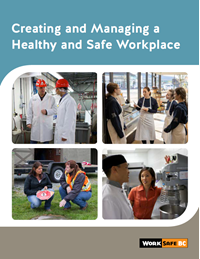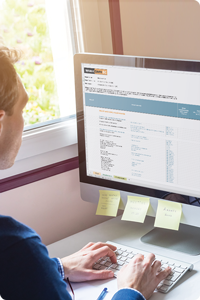Health & safety programs
Health and safety programs are aimed at ensuring workers are protected, risks are minimized, and a healthy and safe workplace is maintained. All employers must establish some form of health and safety program at the workplace. The type of program you need depends on the number of workers you have and the risks associated with their work.
- What an effective health and safety program looks like
- Formal versus less formal health and safety programs
- Determining if you need a joint health and safety committee
- Resources
What an effective health and safety program looks like
An effective program will:
- Identify and control hazards in the workplace.
- Help prevent injuries and disease.
- Limit an organization's financial losses resulting from injuries and disease.
- Promote a positive health and safety culture.
- Outline the importance of, and provide guidance on, health and safety processes such as workplace inspections, investigations, safe work procedures, management meetings for health and safety, joint health and safety committee requirements, and the tracking and trending of OHS records and statistics.
- Include sub-programs focused on health and safety issues pertinent to your site. For example, your site may have a specific lockout program, a fall protection program, or a confined space entry program.
Formal versus less formal health and safety programs
You must have a formal health and safety program if you have either of the following:
- A workforce of 20 or more workers and at least one workplace where there is a moderate or high risk of injury
- A workforce of 50 or more workers
See OHS Guideline G3.1 for information on formal health and safety programs.
Small businesses or employers with fewer than 20 workers need a health and safety program too. These programs can be simpler. We refer to them as "less formal" health and safety programs. See OHS Guideline G3.2 for information about the contents of a less formal health and safety program.
If you're not sure if you need a formal or informal program, follow these steps:
- Determine how many workers are regularly employed in your workplace. Include all workers, supervisors, and managers who have worked for at least one month.
- Determine if your workplace is classified as low (L), moderate (M), or high (H) risk. Reviewing OHS Guideline G3.16 or talking to one of our prevention officers can help you understand the level of risk in your workplace.
- Use the table below to identify the type of program required for your workplace. Keep in mind that in certain situations we may require smaller workplaces to update a program from informal to formal. This may happen if or when your workplace includes high-risk work, has had a high number of injury claims, or has had multiple serious injuries or fatalities.
| Number of workers | Program for workplace with low hazard rating | Program for workplace with moderate hazard rating | Program for workplace with high hazard rating |
| Fewer than 20 | Informal | Informal | Informal |
| 20 or more but fewer than 50 | Less formal | Formal | Formal |
| 50 or more | Formal | Formal | Formal |
Determining if you need a joint health and safety committee
If your workplace is large enough, you may need to have a joint health and safety committee. In smaller workplaces, a worker health and safety representative may be enough. The joint committee or worker representative can help you in rolling out and maintaining your workplace health and safety program.
Use the following table to see whether you need a joint committee or a worker health and safety representative at your workplace.
| Number of workers | Required representation for workplaces (regardless of hazard rating) |
| 9 or fewer | None |
| More than 9, fewer than 20 | Worker health and safety representative |
| 20 or more | Joint health and safety committee |


